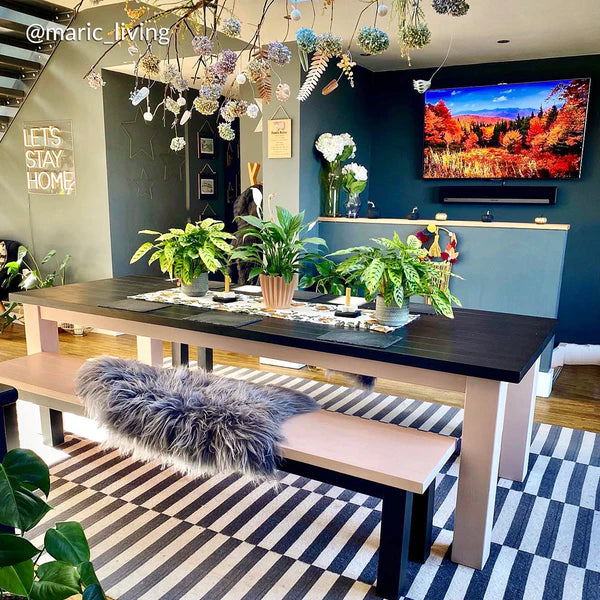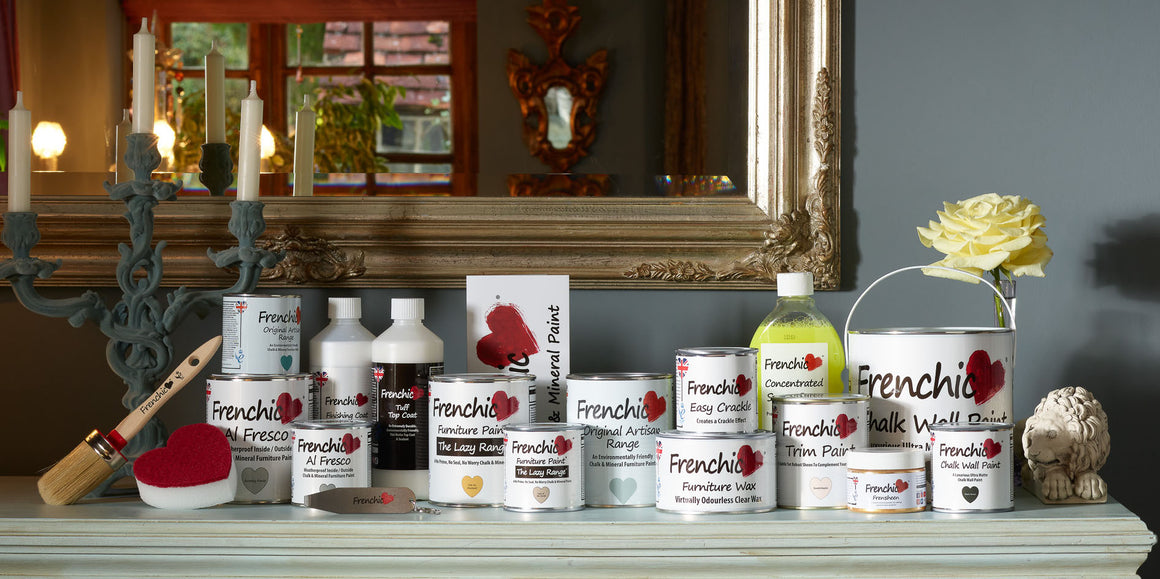
Best Paint Colours for North, South, East & West Facing Rooms
Natural light is one of the biggest factors that affects how colours appear – and the aspect of a room is one of the main factors affecting the amount of light that enters it. That’s why the direction a room faces is important to consider when choosing paint colours.
So, what does it mean if a room is North, South, East or West facing? How do you choose colours that work well in those rooms? And why is it that those colours actually work so well? Read on as we provide all the answers…
How North, South, East and West affect sunlight
As explained above, the direction your room faces can seriously influence which colours work best within it. That’s because the sun rises in the East and sets in the West. But it does so following a sun path or day arc, which is the line it appears to traverse through the sky.
As the “arc” part suggests, it’s not a straight line. Instead, it’s a curve which goes out towards the South at midday in the Northern Hemisphere. That means that South-facing rooms (and the South side of any house) will get the most sunlight overall. Here’s a brief overview of sunlight based on a room’s aspect:
- South-facing rooms – Most sunlight
- North-facing rooms – Least sunlight
- East-facing rooms – Early sunlight
- West-facing rooms – Late sunlight
So, how can you tell which way your windows face? Simply pop your address into Google Maps and click the compass icon to use the default North-South orientation. If your windows are to the right, they’re East-facing, while those to the left are West-facing – and so on…
But that’s not the be all and end all when it comes to light. If you have windows that are shaded by nearby trees or buildings, you may need to factor this in too, as the light levels may be considerably lower.
Whatever aspect your space faces, it’s always worth testing the colours you’re thinking about in the room before you make a final decision. Other factors, like the colour of your floor or the size of the room are also important. Don’t forget to check the colours at night to see how they work with your lighting too.
That’s the basics covered. Now let’s take a look at what typically works for each aspect…
North-facing room paint colours
People often worry about North-facing rooms. They get less natural light – and the light they do get is generally a little cooler. As such, they can look characterless, cold or sallow with the wrong colour choices.
Colours with warmer undertones are the obvious choice as they provide a cosy, welcoming atmosphere. But that doesn’t mean you can only use reds, pinks and yellows!
Many neutral colours have warm undertones, including taupes or greiges and even greys. A good tip is to read the description of a colour carefully as they often contain information about undertones and nuances. Some warmer neutrals to consider are:
Crème Caramel, Granola, Pampas, Swayed, Nougat.
South-facing room colours
South-facing rooms are generally quite easy, as light tends to be brighter and clearer. You can usually go ahead with whatever takes your fancy. The amount of light means you can experiment with more daring or unusual features without worrying about dumbing down your space. Think about painting your ceilings in a shade other than white – maybe even one that’s darker than the walls. Or try colour drenching – using a single, strong colour throughout your space.
However, one factor to check on with South-facing room colours is brightness, particularly if you are sticking to white. Very light rooms can be a little overwhelming if they are painted in a very bright white. Off-whites and pale neutrals are the answer if this is the case, such as:
Wedding Cake, Ghost, Silver Birch, Ivory Tower, Virgin
What about East and West?
With the sun rising in the East, rooms that face this direction get their natural light early on in the day. On the flipside, West-facing rooms get lots of natural light in the evening.
The best colours to use may depend on when the room is most used. If you use an East-facing room in the morning or a West-facing room in the evening, you might want to balance out all of that natural light with cooler colours, including blues, aqua tones and greens:
Hornblower, Santorini, Victory Lane, Steaming Green
Or work with the light and choose a colour that will glow in the sun – check out Sweetcheeks here:
On the other hand, you might use your room more often when it's not in the direct glare of the sun, such as an East-facing lounge where you relax in the evening, or a West-facing dining room for family breakfasts.
If that’s the case, you’ll have a lot more freedom in terms of colours. What you might want to consider, however, is the type of artificial light in the room. Without lots of natural light, you’ll need lights switched on more often. Warm halogen and LED bulbs are the best option as they suit all colours.
Choosing paint colours you love
While aspect, light and room use can all factor into your choice of paint colour, the most important thing is whether a colour looks and feels right to you. Nothing comes above your own style and preference, so be sure to try out a few different colours and go with your heart.
Our sample sachets are perfect for you to test our Chalk Wall Paint colours in your space. Be sure to check our Instagram page too, where you can see a whole array of colours used by like-minded DIYers and decorators.
































